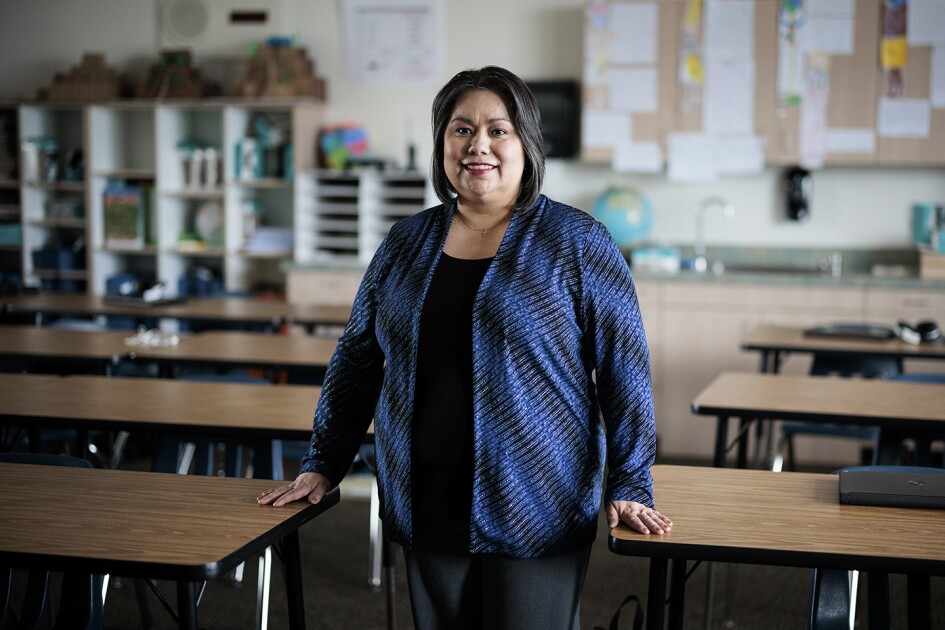For some districts, it’s a million (or multi-million) dollar question: How will you pay for that when ESSER runs out?
Schools nationwide received an unprecedented surge in federal funding during the first year of the COVID-19 pandemic. The largest of the three rounds of funding is set to expire after the current school year.
Districts invested the money in a wide range of initiatives aimed at reversing students’ pandemic-induced academic slide, often hiring dozens of new employees to work with students, or contracting with outside vendors to run new programs or renovate aging facilities.
But ever since the $190 billion in COVID relief funds arrived in district pocketbooks, the question of how school systems will recover when the money dries up has been top of mind.
The Parkrose school district in Oregon currently anticipates a $1.6 million shortfall next school year after ESSER runs out, said Sharie Lewis, the 2,800-student district’s director of business services and operations.
“I don’t have a magic box of where it’s going to come from,” she said.
While alternative funding might not fully cover the gaps left behind by ESSER, many districts have already identified alternative sources they’ll tap to pay for the expenses they’ve been covering in recent years with COVID relief dollars, according to a nationally representative survey of 250 district leaders conducted between Sept. 27 and Oct. 13 by the EdWeek Research Center.
Just shy of half the survey’s respondents, 48 percent, said they’ll use state funds to cover expenses when federal relief aid—known colloquially as ESSER funds—runs out.
In Oregon, Lewis hopes legislators heed the governor’s recent comments in support of increasing funding for public schools. But it’s still too early to tell what that means for districts.
More than a third of respondents said they’ll rely on local tax revenue and federal Title I funds. Roughly 1 in 5 said they’ll tap into funds from private donors and nonprofits to make up the difference.
Along those lines, administrators in Cleveland have proposed changing their plans for a $20 million grant from the philanthropist Mackenzie Scott to cover a larger-than-expected hole that ESSER will leave. The funds were originally designated for giving students more opportunities for class trips and to support students in getting their driver’s licenses.
District leaders now hope to spend a large chunk of that money on continuing tutoring and other out-of-school support for students, Ideastream Public Media reported.
Some districts face major financial challenges in the coming months
Districts have until Sept. 30, 2024, to commit funds to particular expenses. Then they have another four months to “liquidate,” or spend, that money. In some cases, districts may get extended time to spend funds on construction contracts, but that will require states, on behalf of districts, to secure waivers from the U.S. Department of Education.
Not every district has had the foresight or bandwidth to line up alternative funding sources. One in 4 survey respondents said they won’t have any funding sources for expenses they’ve been covering with federal relief aid.
The Missoula district in Montana invested $5 million of ESSER money to pay salaries for 70 full-time teachers, behavior interventionists, and social workers. Thanks to declining enrollment and rising insurance and utilities cost, “when those funds go away there’s nothing to replace that,” Micah Hill, the district’s superintendent, told MTN News.
That kind of situation could translate into many newly hired school district employees losing their jobs once ESSER funds expire. They include 250 teachers, aides, psychologists, and assistant principals in Buffalo, N.Y.; 150 education assistants and more than 300 administrators in Memphis, Tenn.; and 17 counselors and social workers in the Champlain Valley School District in Vermont.
A much smaller share of survey respondents—just 5 percent—said they no longer need the items ESSER has helped them pay for. That may be the result of some districts investing federal relief aid in one-time expenses like construction and technology tools. Still, education leaders have been making the case that students’ academic and social-emotional needs will continue after the timeframe for ESSER has concluded.
Some districts will let the future of their ESSER expenses rest on support from voters. Roughly 10 percent of respondents said they plan to put a bond issue on an upcoming ballot, and the same percentage said they’ll do the same for a local tax increase.
Those strategies aren’t guaranteed to work, though.
Fifteen districts in Minnesota recently saw voters reject their bids for additional funding through local tax increases. And while bond issues have historically been substantially more likely to pass than fail, they face longer odds in some states that require approval from more than a simple majority of voters.
The Parkrose district may propose a bond issue or tax increase to voters in the coming months, Lewis said. But she’s not optimistic—the last attempt failed, with roughly 45 percent of voters in support.
Instead, Lewis is aiming to reduce the district’s energy costs by retrofitting every light fixture with energy-efficient LED bulbs. And she’s considering tapping into the district’s reserves, which she’s helped grow over eight years from $350,000 to more than $3 million.
Lewis said the district’s main goal is to avoid cutting any instructional staff. Other priorities may have to wait.
“I was hoping to use some of [the reserves] to put money into my elementary schools,” which were built in the 1960s and currently lack air conditioning, Lewis said. “That’s not going to happen this year.”











